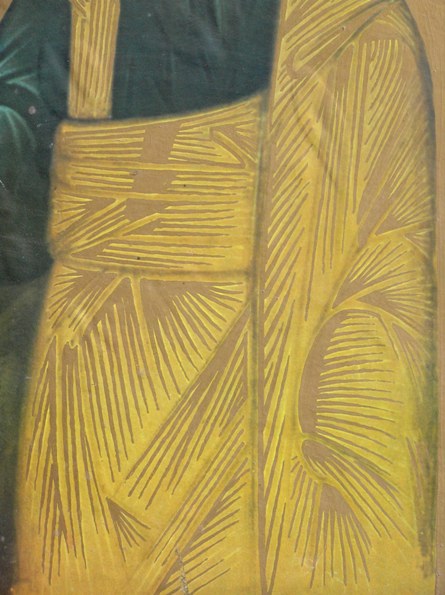|
Considerations
(Sybilla Golec)
|
 |
Błaszczyk
From the dawn of time man wanted to surround himself with
beautiful objects. This need of beauty, not forgetting about magical
and religious function, became a cornerstone of the art. The concept
of beauty is a very complex issue and can be considered on many
levels. The idea what is beautiful and what is not has undergone
continuous changes through ages. It is enough to reach to the
history of art. In antiquity and in Renaissance the beauty was
perceived as en aspiration for harmony, perfection, perfectly
balanced proportions. Baroque, on the contrary sought for beauty in
the expressive, complex forms, powerful light and shade, complex
composition full of movement and dynamism. Presented examples make
us aware of the fact that sense of beauty has been transforming
along with passing time. Next generations were creating a new
pattern. Is there any place for beauty today, in period of common
trash and mass?
In the modern art, beauty seems to be rejected as a needless
ballast or destroyed by being reshaped into either kitsch or
abrraviative expression sand even if it comes into existence it is,
for sure, not he most important. Nowadays, art want to force us to
think, to shock; unfortunately, very often it is devoid of clear
form. Today art is more than once only a game, sociological
experience, a play with an audience in which exhibitionism and
mutual peeping are predominant. Is it possible to feel indignant at
regard that there is no beauty at all or, generally speaking, it is
a matter of taste?
But art, apart from broadening horizons should also enrich a
human spiritually, make him more conscious and through that a better
person. It is also important to remember that beauty express itself
not only in harmony of ancient proportions, but also through
expressive, unsightly, rough, brutal forms. Even “ugly”
paintings
can fulfill their function of a signpost. The strict condition is not
an eloquent but a full and perfect form, so in every time and place
the artist’s intentions were clear to understand. It is unacceptable
that reception of a work of art is possible only in combination with
the artist’s or the critic’s explanation. In such situation the
commentary is sufficient.
In modern plastic arts beauty express itself in artistic
language commensurate to the content and this issue has a
fundamental place in art.
|
|
 |
Nowacka
From the dawn of time and history, people wanted to be surrounded by
beautiful objects. This need for beauty, remembering the magic and religious
function, became the cornerstone of Art. The understanding of the word
Beauty itself is a very complex and should be considered on many levels of
meaning. The ideal of what is beautiful and what is not has undergone many
changes throughout the time. Analysing only the history of Art we see that
while in Antiquity and Renaissance beauty was associated with searching for
the harmony, perfection and ideal proportions, in Baroque beautiful was
everything that had wild expressions and forms, striking contrast of light
and shadow and was dynamic. All this proves that the notion of Beauty has
not been constant. Each epoch brought new ideal of beauty. The question that
arises here is whether in present world of sloppiness and sameness there is
place for Beauty. It seems that in modern Art, the Beauty became a kind of
unwanted value that should be rejected or at least destroyed, and replaced
by kitsch or even by deviant expressions. Moreover, even if the Beauty
appears it has marginal position. Nowadays, though often without clear and
understandable form, Art wants to make us think, wants to shock and stir.
Art became a kind of game, sociological experiment, play with the audience
which is dominated by exhibitionism and omnipresent phenomena of Peeping
Toms. But do we really have to be so indignant and claim that there is no
true Beauty or it is just a matter of individual taste? Art, still, should
permeate people by its spiritual qualities, make us more conscious and so
better, apart from opening our minds to the world. We should, however,
remember that Beauty not necessary has to be expressed only by harmony of
ancient proportions but also by ugly, sharp and obnoxious forms. Even the
â?uglyâ?? paintings can function as guidelines on life. However, an essential
condition is here the suggestive form that would be legible for everyone in
every time. It would be unacceptable if understanding of the work of art was
possible only with the commentary from author or critic. In that case, we
might as well skip the work of art and concentrate only on the commentary.
In modern plastic arts, the true beauty is expressed by, adequate for the
content, language and so Beauty always takes crucial place in world of Art. |
|


